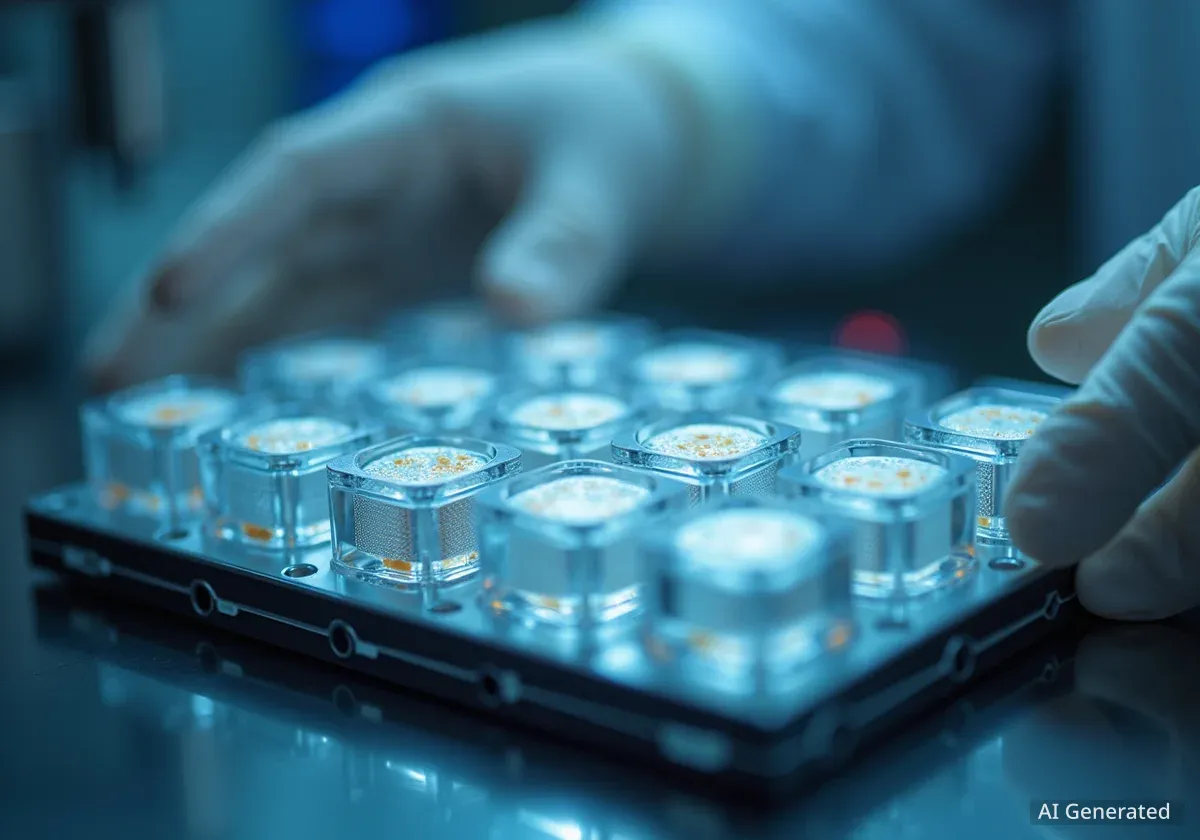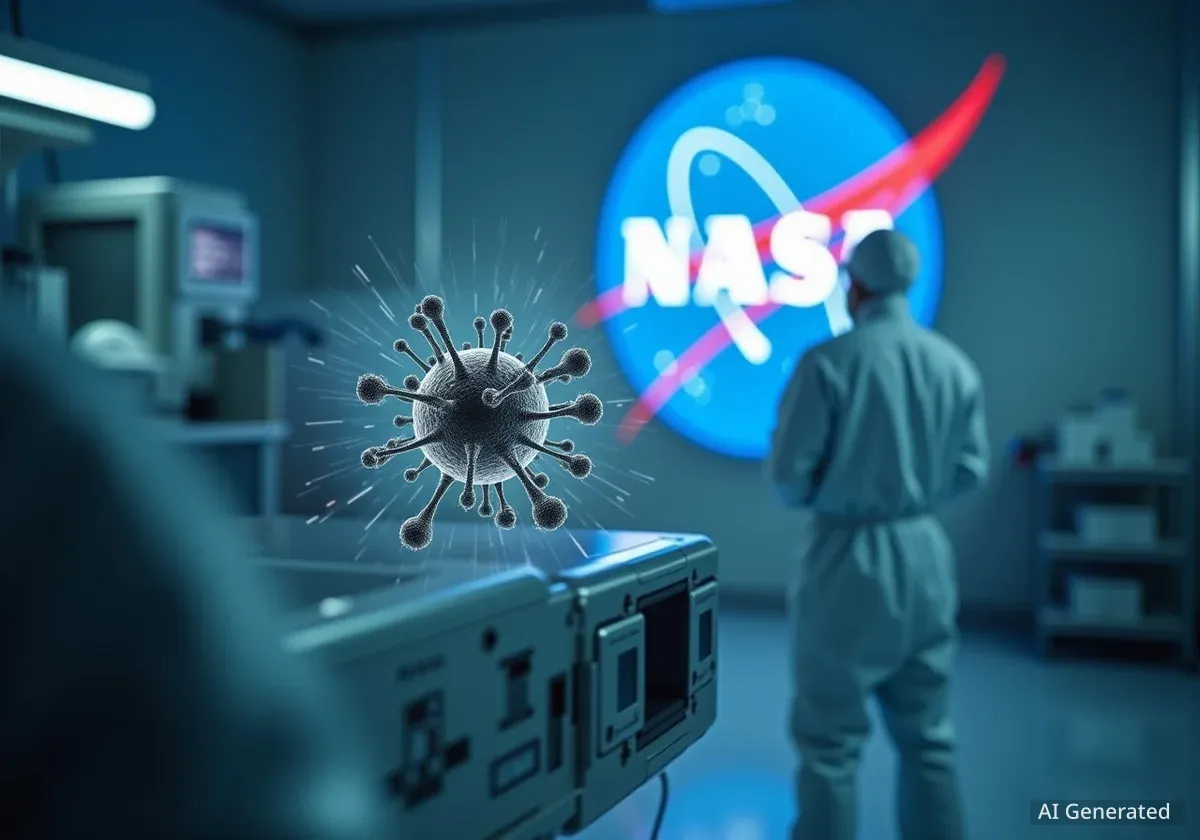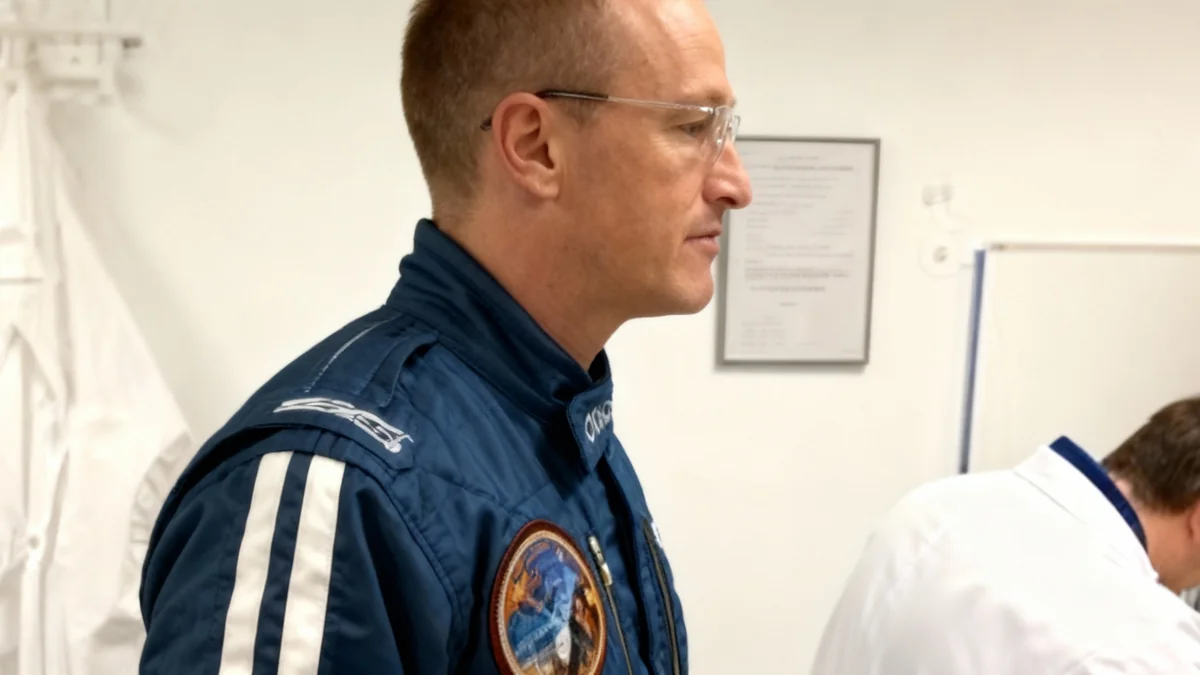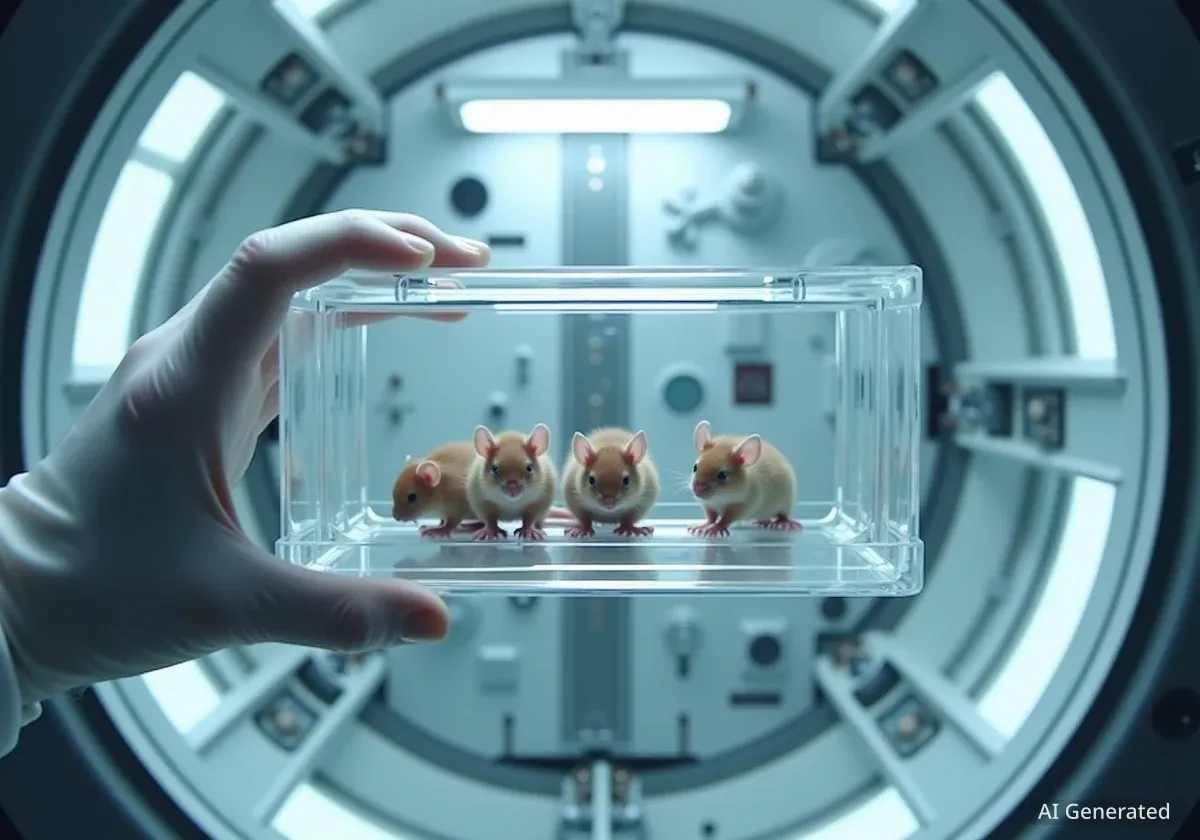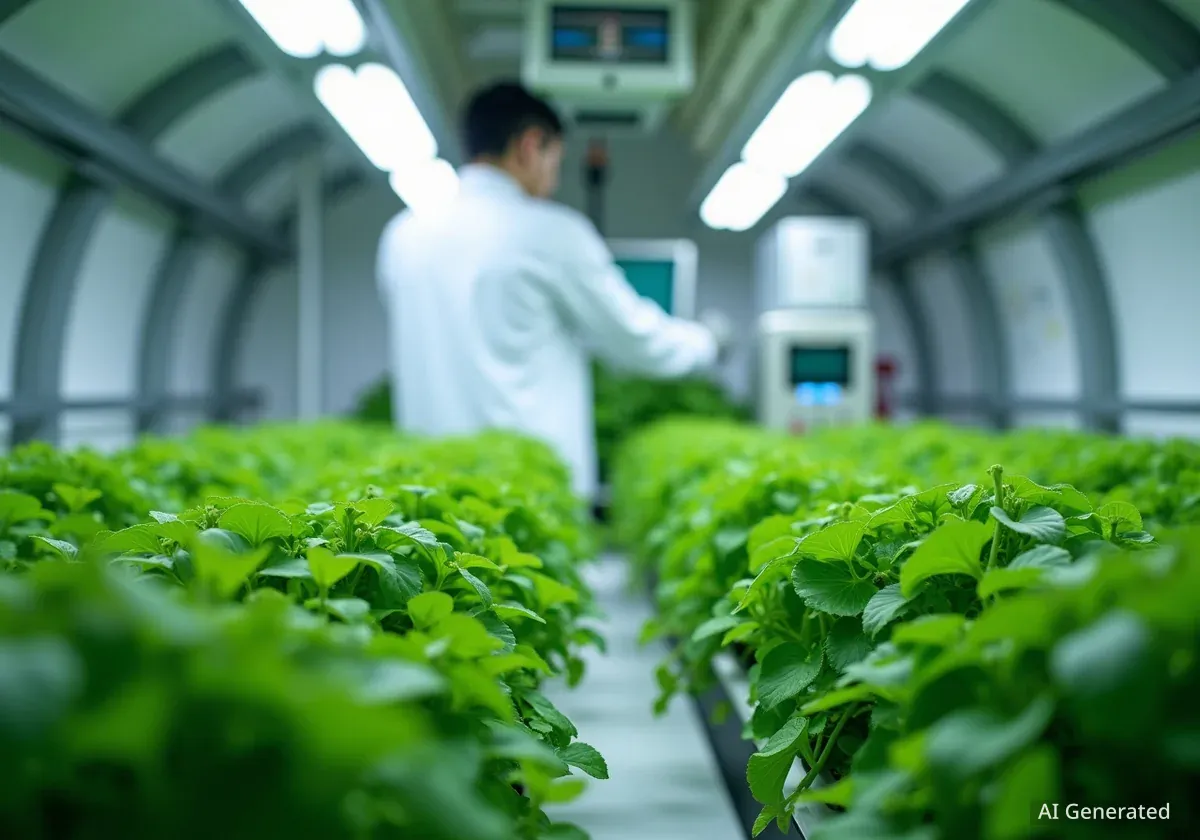NASA is preparing to send miniature, personalized human organs into deep space aboard the Artemis II mission. These "organ chips," containing cells from the mission's astronauts, will travel alongside the crew on their ten-day journey around the Moon to help scientists understand the effects of space radiation and microgravity on human health.
The experiment is part of NASA's A Virtual Astronaut Tissue Analog Response (AVATAR) program. The goal is to gather crucial data that could lead to better protective measures and treatments for astronauts on future long-duration missions to the Moon, Mars, and beyond.
Key Takeaways
- NASA's Artemis II mission will carry personalized bone marrow organ chips into space.
- The project, called AVATAR, aims to study the impact of space radiation and microgravity on human cells.
- Each chip contains cells from the specific astronauts on the mission, allowing for personalized data collection.
- Findings could improve astronaut health on long-duration missions and have applications for medical treatments on Earth, such as cancer therapy.
A New Frontier for Space Medicine
As humanity prepares for extended stays in deep space, understanding the physiological toll of the environment beyond low-Earth orbit is critical. Astronauts face significant health risks, including exposure to high-energy cosmic radiation and the persistent effects of microgravity, which can impact multiple systems in the body.
The bone marrow, a vital component of the human immune system, is particularly vulnerable to these stressors. It is responsible for producing blood cells, and any damage to its function can have serious consequences for an astronaut's health during a mission.
The Challenge of Studying Space Health
Historically, research into the health effects of space has been challenging. The sample size is extremely small—only a limited number of people have traveled to space. Furthermore, the cramped conditions and operational demands aboard spacecraft like the International Space Station (ISS) restrict the scope and scale of biological experiments.
To overcome these limitations, NASA is turning to innovative technology. The AVATAR program leverages organ-on-a-chip systems to create a more efficient and precise way to study cellular responses in the unique environment of deep space.
The AVATAR Program and Organ-on-a-Chip Technology
The core of the AVATAR experiment is the organ chip, a microfluidic device about the size of a USB stick. These chips contain living human cells grown in a three-dimensional structure that mimics the function and physiology of a specific human organ, in this case, bone marrow.
This technology represents a significant leap forward from traditional cell cultures, which are grown on flat petri dishes and often fail to replicate the complex interactions found within a living body. The chips allow fluids, nutrients, and compounds to be passed through the cells, simulating blood flow and providing a more accurate model of human biological processes.
The AVATAR payload is entirely self-contained. It is a small, battery-powered, and fully automated unit that will fly alongside the Artemis II crew inside the Orion capsule, requiring no interaction from the astronauts during the flight.
Personalized Medicine in Orbit
A key innovation of the AVATAR project is its personalized approach. The bone marrow chips flying on Artemis II will contain cells sourced directly from the mission's astronauts. This allows researchers to study how each individual's biology reacts to the stresses of spaceflight.
By creating these personalized biological avatars, scientists can examine individual differences in radiation sensitivity and immune response. This level of detail is impossible to achieve through more generalized studies and provides a foundation for developing tailored countermeasures for each crew member.
"By creating personalized organ chips for each astronaut, the individual impacts of space can be examined and provide crucial insights into how to best treat astronauts’ unique needs on longer expeditions," states a release from the Physicians Committee for Responsible Medicine, highlighting the project's potential.
The Artemis II Experiment Explained
The Artemis II mission will be the first crewed flight of NASA's Orion spacecraft, taking four astronauts on a ten-day trajectory around the Moon. During this journey, the AVATAR payload will expose the bone marrow chips to the full spectrum of deep space radiation and sustained microgravity.
The experiment includes several key components:
- Personalized Chips: Each chip is populated with cells from a specific Artemis II astronaut.
- Automated System: The payload will automatically manage the environment within the chips, providing nutrients and removing waste.
- Data Collection: The system will monitor cellular changes throughout the mission.
- Post-Flight Analysis: Upon return to Earth, the chips will be analyzed to assess DNA damage, changes in immune cell function, and other biological markers.
This detailed analysis will help scientists build a comprehensive picture of how the bone marrow responds to the harsh environment outside Earth's protective magnetic field. The data gathered will be invaluable for predicting health risks and designing effective shielding and medical treatments for future missions to Mars.
Implications for Earth and Beyond
While the primary goal of the AVATAR program is to safeguard the health of astronauts, the research has significant potential for terrestrial medicine. The study of how human cells respond to radiation has direct applications for cancer treatment.
Radiation therapy is a common treatment for cancer, but it can damage healthy tissue, including bone marrow. By understanding the mechanisms of radiation damage at a cellular level, researchers may be able to develop better therapies that target cancer cells more effectively while protecting healthy ones.
A New Era of Ethical Research
The use of organ-on-a-chip technology also marks a shift toward more human-relevant, ethical research methods. By using human cells in a system that mimics organ function, scientists can reduce the reliance on animal testing, which often fails to accurately predict human responses.
The insights gained from the Artemis II mission could inform treatments for patients undergoing radiation therapy, improve our understanding of immune system disorders, and accelerate the development of personalized medicine here on Earth.
As NASA pushes the boundaries of human exploration, projects like AVATAR demonstrate how the quest to explore space continues to drive innovation that benefits all of humanity. The tiny organ chips flying around the Moon represent a giant leap for the future of both space medicine and healthcare on our home planet.

